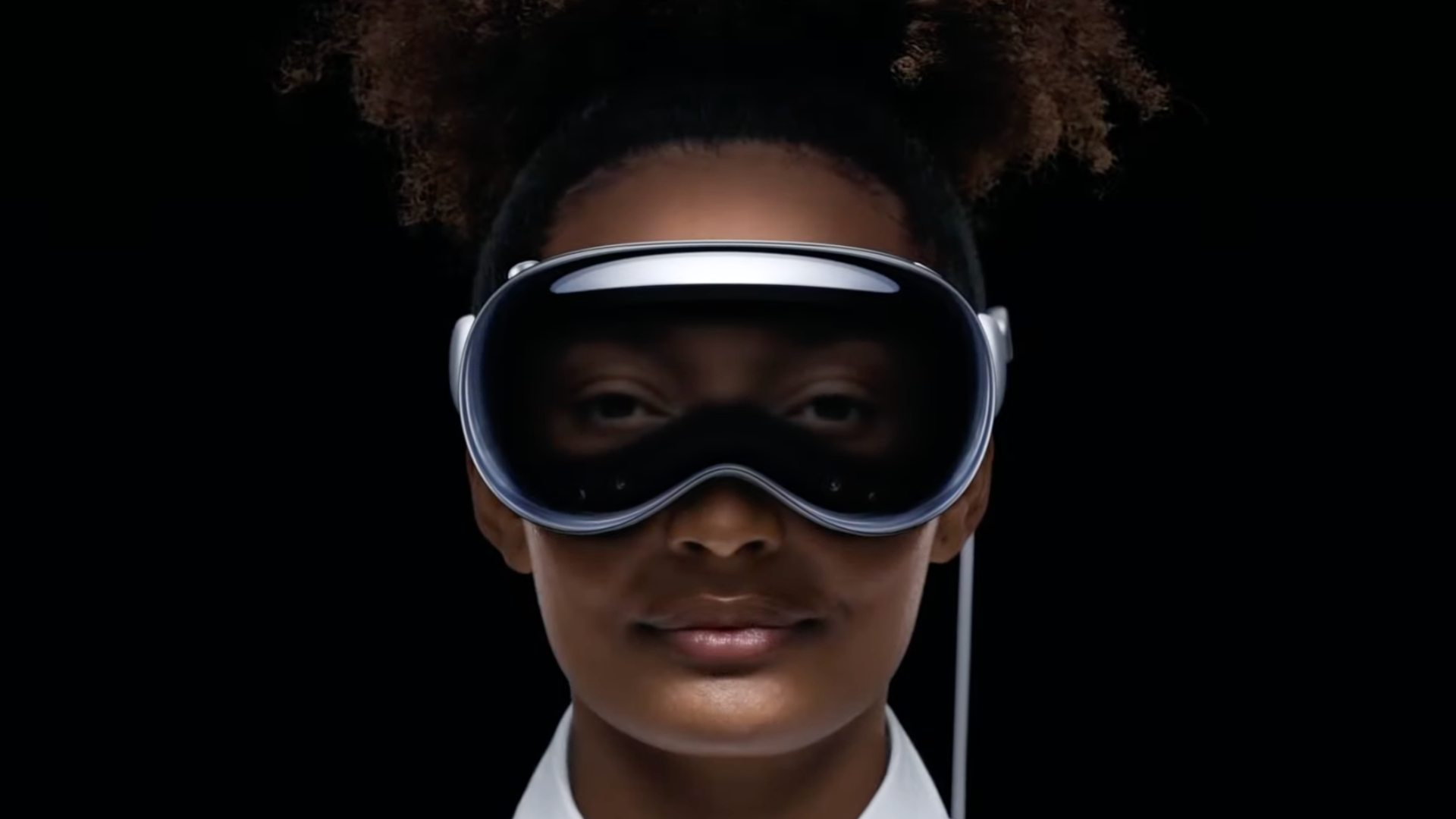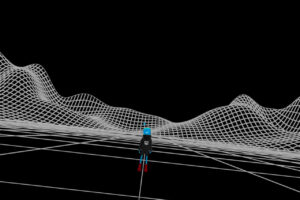
Thanks to the successful marketing of Apple’s Vision Pro, spatial computing and augmented reality (AR) are about to get even more exciting and in your face, transforming brick-and-mortar shops into next-gen storefronts.
Spatial computing, a vision long held by Silicon Valley, aims to shift interactions with technology away from screens and into physical spaces. Users will engage with technology seamlessly within their environments through voice commands, auditory cues, gestures, and more.
The Apple Vision Pro, which was first teased in June at Apple’s annual WWDC conference, has undoubtedly elevated the status of these technologies simply from the anticipation and promises it’s already marketed.
What is spatial computing?
Spatial computing is a technological approach that allows for digital interactions to occur seamlessly within our physical environment. Instead of being confined to screens, spatial computing integrates digital information into the world around us. This can be achieved through voice commands, gestures, auditory cues, and augmented reality (AR) visuals. In essence, it merges the digital and physical realms, enabling users to interact with technology as if it were a natural part of their surroundings.
Apple’s CEO, Tim Cook, referenced spatial computing when he first teased the device as “the first product you look through, not at.” The device is scheduled for release in early 2024 and is part of a bigger movement that is actively working to bridge e-commerce and brick-and-mortar retail.
Diego Di Tommaso, co-founder of the AR metaverse platform Over, told WWD that he has noticed a surge in AR’s popularity since Apple unveiled its Vision Pro. Naturally, he expects that brands will begin exploring new avenues, including physical mom-and-pop storefronts.
In the next six to twelve months, Di Tomasso believes brands will primarily focus on AR activations in physical stores, which could involve integrating AR experiences into store exteriors or incorporating interior elements, such as virtual try-ons or product enhancements to entice customers.
Digital and physical realities become one
This approach has the potential to transform any location into a “store,” benefiting brands with strong online followings. By beaming store-like experiences with avatars into customers’ homes, online popularity could translate into real-world engagement.
In September, Over will collaborate with Italian fashion company Pinko for an AR activation at a pop-up store in Florence’s Rinascente building. The activation will encompass both exterior and interior AR experiences, including interactive digital products, aimed at promoting a new sustainable product line.
However, Pinko told WWD that while it’s still early, these “exterior and interior AR experiences, including interactive digital products” will help “drive awareness” towards a new sustainable product line.
Giovanna G. Casimiro, who since 2022, served as Head of Metaverse Fashion Week, has turned her attention towards Phygicode, a consortium that wants to use these virtual technologies to “bring people back to the malls and entertainment centers.”
Having recently left Decentraland to step into the role of Phygicode’s Head of Production, Casimiro also shared her belief with WWD that we are about to see the transformation of “phygitality” into a more immersive experience that plays into the growing phases of spatial computing and AR.
While realizing these scenarios will take time, tech innovators are appearing more confident in anticipating AR’s next phase residing in retail.
Editor’s note: This article was written by an nft now staff member in collaboration with OpenAI’s GPT-4.
- SEO Powered Content & PR Distribution. Get Amplified Today.
- PlatoData.Network Vertical Generative Ai. Empower Yourself. Access Here.
- PlatoAiStream. Web3 Intelligence. Knowledge Amplified. Access Here.
- PlatoESG. Automotive / EVs, Carbon, CleanTech, Energy, Environment, Solar, Waste Management. Access Here.
- PlatoHealth. Biotech and Clinical Trials Intelligence. Access Here.
- ChartPrime. Elevate your Trading Game with ChartPrime. Access Here.
- BlockOffsets. Modernizing Environmental Offset Ownership. Access Here.
- Source: https://nftnow.com/news/spatial-computing-augmented-reality-taking-consumers-beyond-the-screen/
- :has
- :is
- :not
- 2022
- 2024
- a
- About
- achieved
- Activation
- activations
- actively
- aimed
- aims
- allows
- already
- also
- an
- and
- annual
- anticipating
- anticipation
- any
- Apple
- approach
- AR
- AR experiences
- ARE
- around
- article
- AS
- At
- attention
- augmented
- Augmented Reality
- augmented reality (ar)
- Avatars
- avenues
- away
- back
- BE
- become
- begin
- being
- belief
- believes
- benefiting
- bigger
- blockchain
- both
- brands
- BRIDGE
- Building
- by
- CAN
- Centers
- ceo
- Co-founder
- collaborate
- collaboration
- company
- computing
- Conference
- confident
- consortium
- could
- Customers
- device
- digital
- e-commerce
- Early
- elements
- elevated
- enabling
- encompass
- engage
- engagement
- enhancements
- Entertainment
- Environment
- environments
- essence
- Even
- exciting
- expects
- experience
- Experiences
- Exploring
- Face
- Fashion
- First
- Focus
- For
- from
- future
- get
- Growing
- he
- head
- Held
- help
- her
- Homes
- HTTPS
- if
- immersive
- in
- Including
- incorporating
- information
- innovators
- instead
- Integrates
- Integrating
- interact
- interactions
- interactive
- interior
- into
- involve
- IT
- Italian
- ITS
- june
- left
- Line
- location
- Long
- Look
- Marketing
- member
- merges
- Metaverse
- metaverse platform
- months
- more
- movement
- Natural
- New
- next
- NFT
- note
- now
- occur
- of
- on
- online
- or
- our
- over
- part
- People
- phase
- physical
- platform
- plato
- Plato AiStream
- Plato Data Intelligence
- PlatoAiCast
- PlatoData
- plays
- pop-up
- popularity
- potential
- primarily
- Pro
- Product
- Production
- Products
- promises
- promoting
- real world
- realities
- Reality
- realizing
- realms
- recently
- release
- retail
- Role
- scenarios
- scheduled
- screens
- seamlessly
- see
- September
- shared
- shift
- shops
- Silicon
- Silicon Valley
- simply
- since
- SIX
- spaces
- Spatial
- spatial computing
- Staff
- Status
- Step
- Still
- store
- stores
- strong
- successful
- such
- surge
- sustainable
- Take
- teased
- tech
- technological
- Technologies
- Technology
- that
- The
- The Future
- the world
- their
- These
- this
- Through
- Tim
- time
- to
- towards
- Transform
- Transformation
- transforming
- translate
- Turned
- undoubtedly
- unveiled
- us
- use
- users
- Valley
- Virtual
- vision
- visuals
- Voice
- voice commands
- wants
- was
- we
- Web3
- were
- when
- which
- while
- WHO
- will
- with
- within
- working
- world
- written
- WWD
- you
- Your












